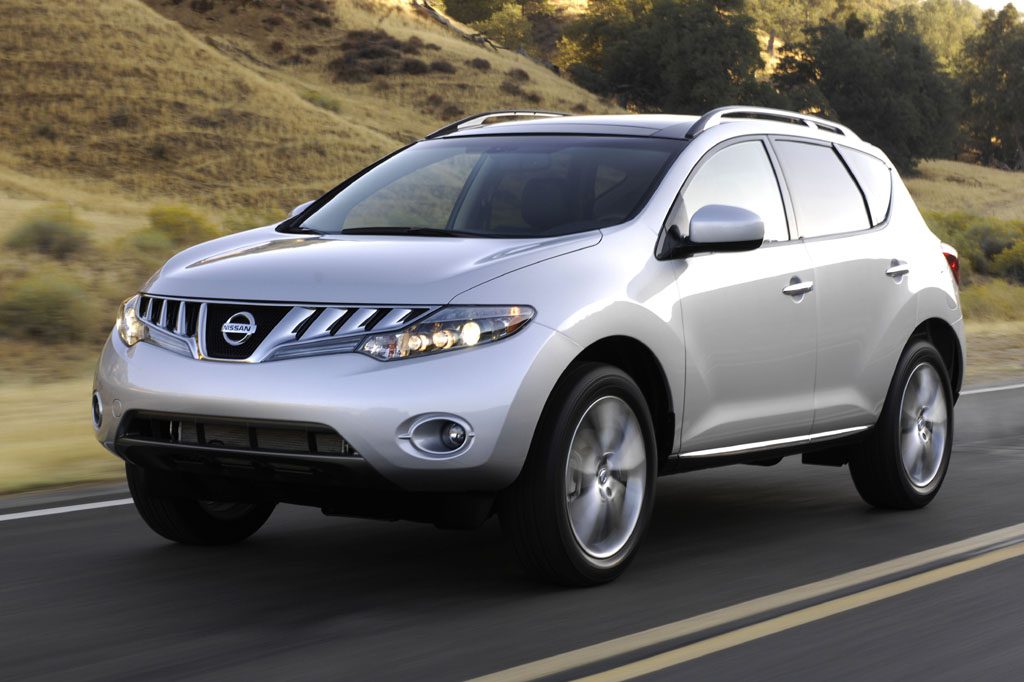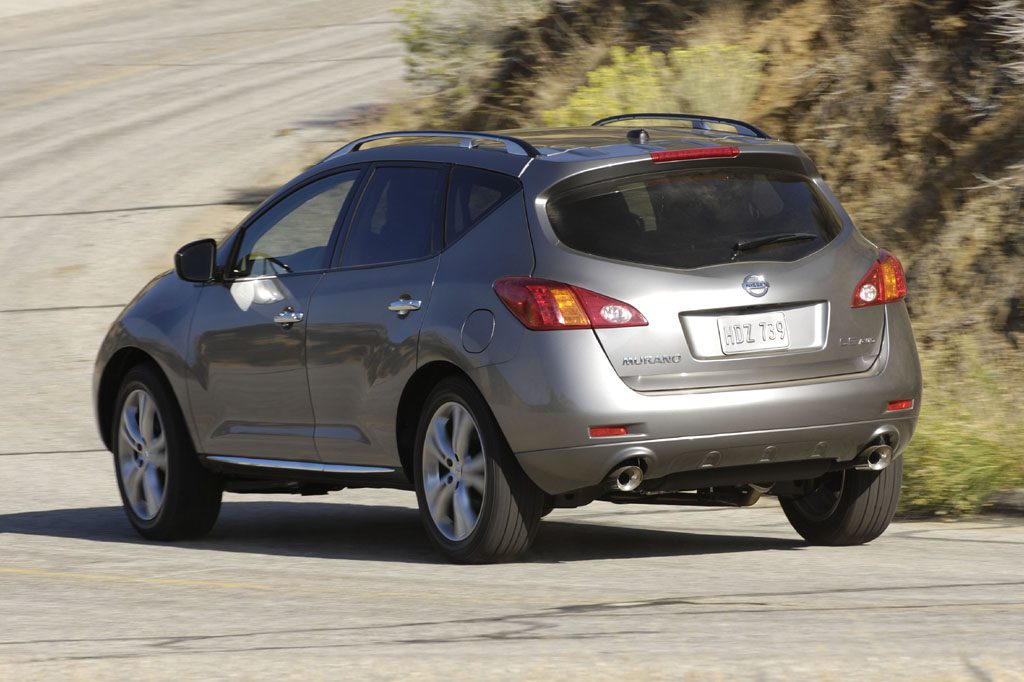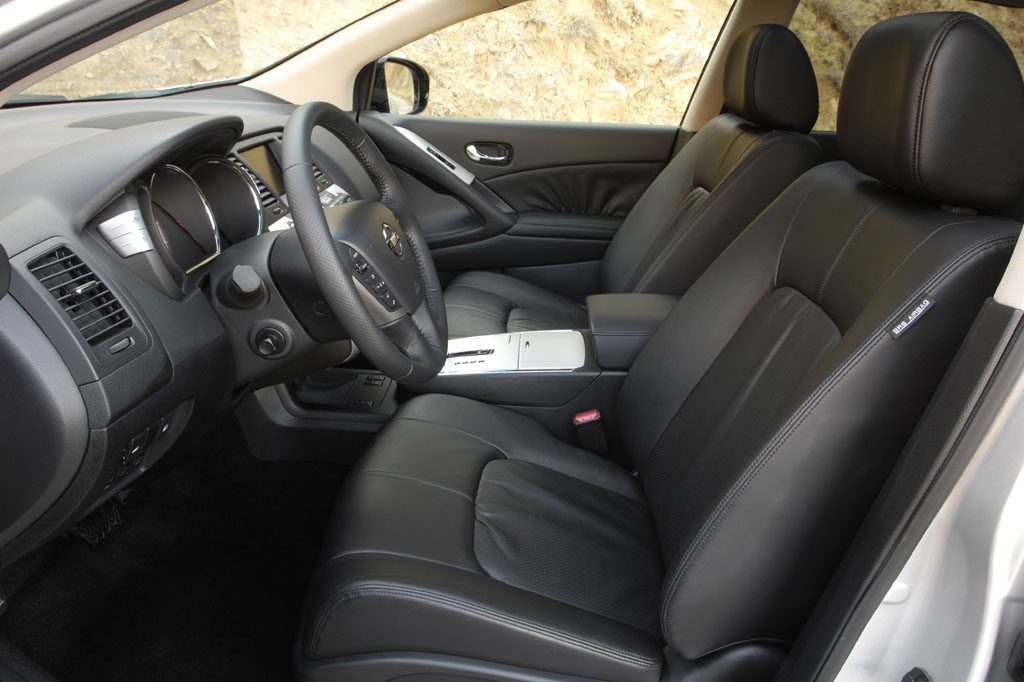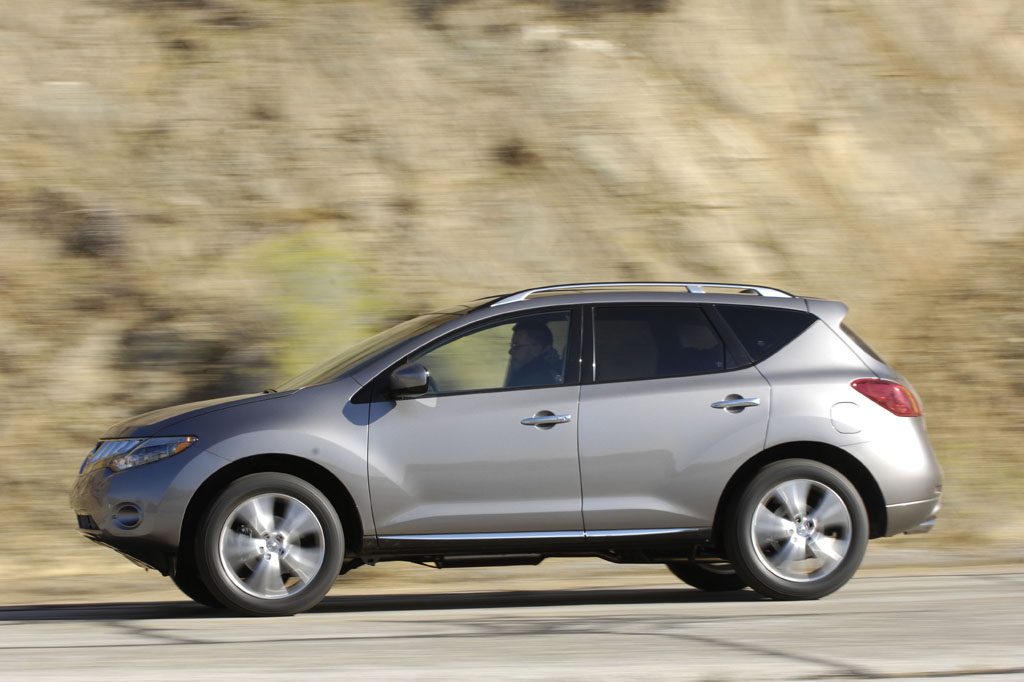| Midsize SUV; Built in Japan |
|
|
| Good condition price range: $8,900 – $36,900* |

2009 Nissan Murano Front

2009 Nissan Murano Rear

2009 Nissan Murano Interior

2009 Nissan Murano Profile
| Pros: |
|
| Cons: |
|
The redesigned-for-2009 Murano is a likable SUV that has retained that model’s secure handling, comfortable interior, cargo utility, and strong, refined powertrain. Midsize SUV shoppers would be wise to add it to their test-drive list. Resale values of lower-end models (S and SL) have been on the high side, keeping used-car prices somewhat hefty.
Overview
Nissan’s midsize sport-utility vehicle, again offered with front-wheel or all-wheel drive, was redesigned for 2009, after one season’s absence from the market. Called “all-new” in its second generation, the 2009 Murano moved upscale, according to Nissan. Seating five, the Murano was based on Nissan’s “D” platform, which was shared with the recently-redesigned midsize Altima sedan. Three models went on sale: S, SL, and top-of-the-line LE. Each used a 265-horsepower 3.5-liter V6 engine and an Xtronic continuously variable automatic transmission (CVT). A 245-hp V6 had served in Murano’s prior generation. S and SL models could have front-wheel drive or all-wheel drive; LE was AWD-only. Murano’s AWD system lacked a low-range gear for off-roading. Maximum towing capacity was 3500 pounds. Standard safety features included antilock brakes, traction control, an antiskid system, front side airbags, and curtain side airbags. Heated front and rear seats were available, as were a navigation system and backseat DVD entertainment. LE models included 20-inch wheels, xenon headlamps, a rearview camera, leather upholstery, and keyless entry/starting. A new dual-panel moonroof and a power liftgate also were offered, and 20-inch wheels were available for the first time. Rivals included the Ford Edge, Mazda CX-7, and Toyota Venza, as well as the Lexus RX 350 and Honda Pilot.
Yearly Updates
| 2010 Murano Except for the addition of a front-drive LE model for 2010, little changed for the Murano. Keyless access and engine start now was standard on all models, the S edition gained privacy glass, and the SE added roof rails. A dual-panel moonroof became standard on the LE edition. Voice-activated navigation with real-time traffic information and a Music Box hard drive for storing digital-music files was optional on SL and LE models. |
| 2011 Murano The 2011 Nissan Murano lineup gained a new trim level, the SV, as well as a convertible body style called the CrossCabriolet. |
| 2012 Murano The 2012 Nissan Murano had only minor trim changes. |
| 2013 Murano For 2013, the Murano wagon received new “Safety Shield” features as optional equipment, and some standard and optional equipment was shuffled among trim levels. There was also a new Value Package for SV models and two new exterior colors. |
| 2014 Murano Changes for the 2014 Murano were few, so the big news was that the Tinted Bronze exterior color could now be had with a black interior in addition to the previously available biege. The 2014 CrossCabriolet model debuted in early 2013, and as before was only offered in one trim level. |
